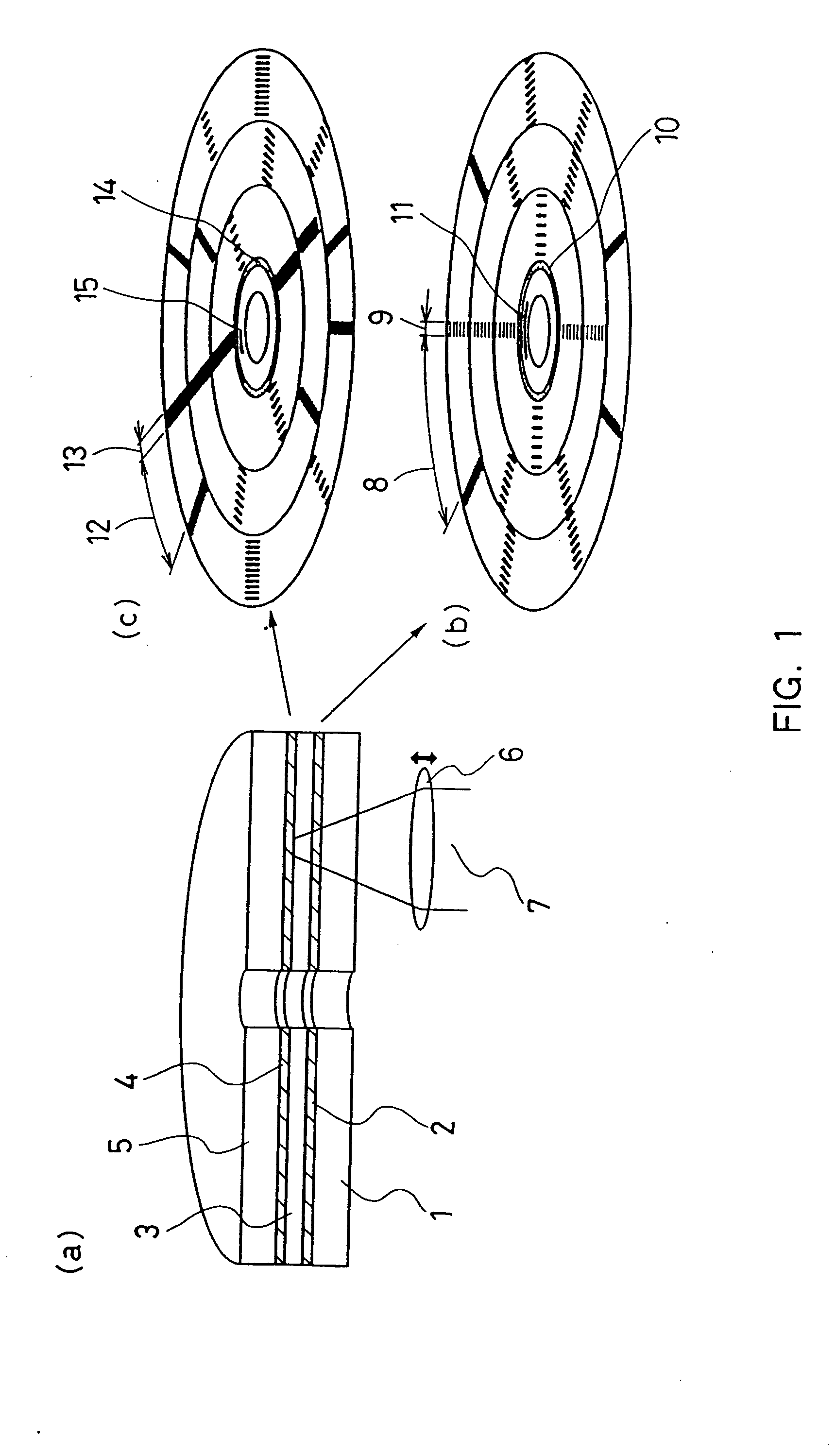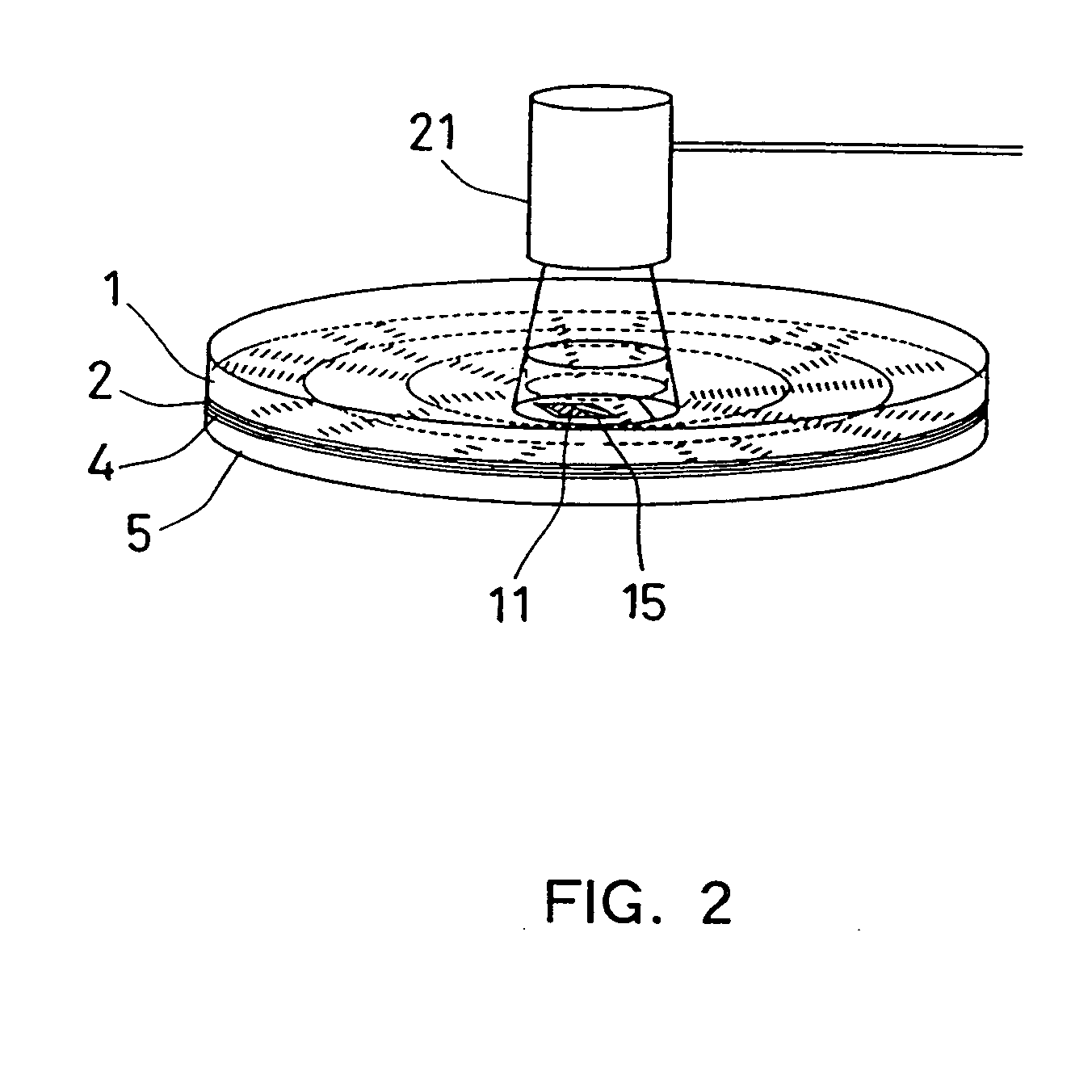Optical information recording medium, and method and apparatus for recording and reproduction
a technology of optical information and recording medium, applied in the field of optical information recording medium, can solve the problems of distorted signals reproduced, and the inability to demodulate recorded information correctly
- Summary
- Abstract
- Description
- Claims
- Application Information
AI Technical Summary
Benefits of technology
Problems solved by technology
Method used
Image
Examples
embodiment 1
[0056]FIG. 1 shows a configuration of an optical information recording medium according to Embodiment 1 of the present invention. FIG. 1(a) is a cross-sectional view of the optical information recording medium that includes a first information layer 2, a separating layer 3, a second information layer 4, and a protective plate 5 in this order on a substrate 1. Information signals are recorded / reproduced on the first information layer 2 with a light beam 7 focused by an objective lens 6 from the side of the substrate 1, and the light beam through the first information layer 2 is used for recording / reproduction on the second information layer 4.
[0057]FIG. 1(b) shows a configuration of a recording area of the first information layer 2. The recording area has a sector structure including data portions 8 for recording information signals and sector address portions 9 for managing the location of data to be recorded. The recording medium of this embodiment employs the sector format referr...
embodiment 2
[0108] In Embodiment 1, the disk position identifiers are provided on each information layer in a recording medium to detect the amount of sector dislocation. On the other hand, a method for detecting the amount of sector dislocation of this embodiment does not require the disk position identifiers.
[0109] Hereinafter, the method will be described specifically with reference to FIG. 9. A signal is recorded on a recordable management area or the continuous tracks in a data area of a first information layer. In this case, at least one sector or more remains unrecorded in the circumferential direction.
[0110]FIG. 9(a) shows the first information layer, where data are recorded on the continuous tracks of a first sector (i.e., the portion indicated by reference numeral 92) in the data potions of the first information layer. In this drawing, the detailed illustration of a second information layer is omitted. It is preferable that the number of continuous tracks of the first information la...
embodiment 3
[0117] Each of the above embodiments relates to a method for suppressing the fluctuation in amplitude caused by the recorded state in the track direction or the fluctuation in recording power. This embodiment relates to a method for achieving stable recording / reproduction by further reducing the fluctuation factors resulting from the recorded state in the track direction of the information layer on the light incident side.
[0118]FIGS. 4, 6, and 8 show a change in the level of the reproduced signal from the second information layer 4, depending on whether the first information layer 2 is recorded or not. In each case, a change in the amount of light passing through the sector address portions in the track direction is compensated.
[0119] However, when a light beam is focused-on the second information layer 4, the area of the first information layer 2, through which the light beam is transmitted, depends mainly on the thickness of a separating layer and the NA of an objective lens. He...
PUM
 Login to View More
Login to View More Abstract
Description
Claims
Application Information
 Login to View More
Login to View More - R&D
- Intellectual Property
- Life Sciences
- Materials
- Tech Scout
- Unparalleled Data Quality
- Higher Quality Content
- 60% Fewer Hallucinations
Browse by: Latest US Patents, China's latest patents, Technical Efficacy Thesaurus, Application Domain, Technology Topic, Popular Technical Reports.
© 2025 PatSnap. All rights reserved.Legal|Privacy policy|Modern Slavery Act Transparency Statement|Sitemap|About US| Contact US: help@patsnap.com



